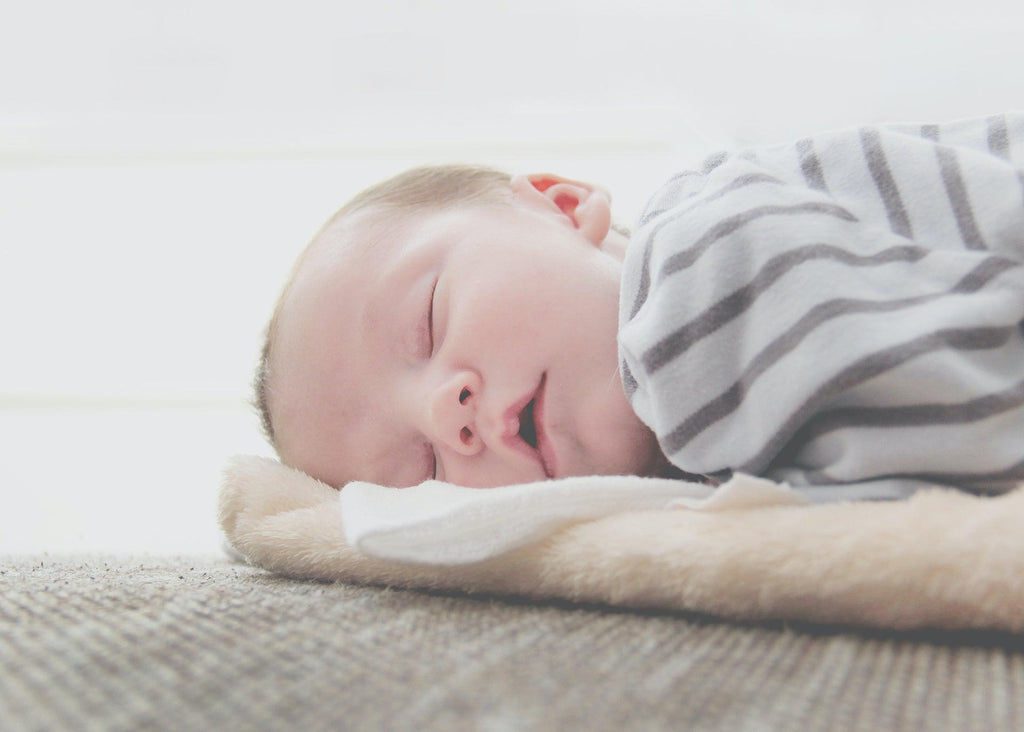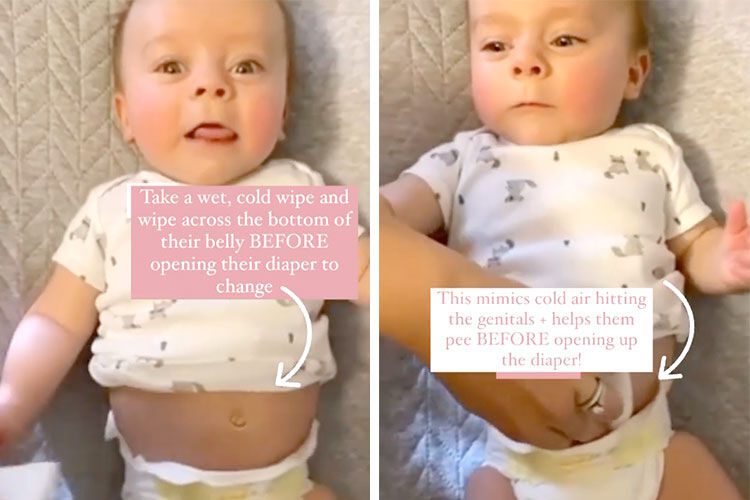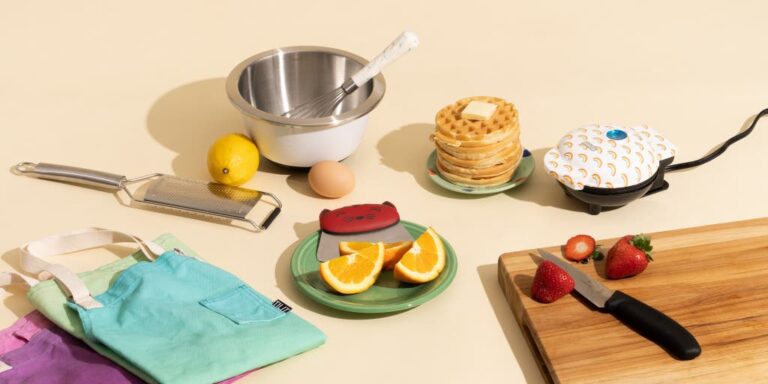How Many Newborn Outfits Do I Need: The Ultimate Guide
You will likely need around three newborn outfits for your baby. These outfits should be comfortable and suitable for sleeping, strolling, and other daily activities.
It is important to have clean clothes for your newborn to ensure their health and well-being.
Understanding Newborn Clothing Essentials
Discovering the essentials of newborn clothing is crucial, especially when determining how many outfits you’ll need. From comfy onesies to sleepwear, ensuring you have the right number of outfits for your little one’s daily activities and growth is essential.
When it comes to preparing for the arrival of your little one, one of the most exciting tasks is shopping for adorable newborn outfits. However, it can be overwhelming to know exactly how many newborn outfits you should buy. To help you navigate this process, it’s crucial to understand the newborn clothing essentials.
What Clothes Do Newborns Need?
When selecting newborn clothes, it’s essential to prioritize comfort, convenience, and practicality. Here are the key clothing items that newborns require:
- Onesies: Opt for soft and breathable onesies that make diaper changing hassle-free.
- Sleepsuits: Sleepsuits or footed pajamas are perfect for keeping your newborn cozy and warm during sleep.
- Hats and mittens: Keep your newborn’s head and hands protected with soft and snug hats and mittens.
- Socks/booties: Choose socks or booties that are gentle on your baby’s delicate feet.
- Swaddles and receiving blankets: Swaddles and receiving blankets are versatile and can be used for snuggling, feeding, or as a cover-up.
The Importance Of Choosing The Right Fabric For Newborns
Selecting the right fabric for your newborn’s outfits is vital for their comfort and well-being. Here’s why:
- Softness: Opt for fabrics like organic cotton or bamboo, which are gentle on your baby’s sensitive skin.
- Breathability: Fabrics like cotton allow air to circulate, preventing overheating and reducing the risk of rashes.
- Hypoallergenic: If your baby has sensitive skin or allergies, choose hypoallergenic fabrics to minimize irritation.
- Ease of care: Look for machine-washable fabrics that can withstand frequent laundering without losing their softness or shape.
How To Select The Appropriate Size For Newborn Outfits
Choosing the right size for newborn outfits is crucial to ensure a comfortable fit for your little one. Here are some tips to help you select the appropriate size:
- Refer to the weight and height guidelines provided by the brand or retailer to determine the correct size range for your newborn.
- Keep in mind that babies grow quickly, so it’s advisable to buy a mix of newborn and slightly larger sizes to accommodate their growth spurts.
- If you’re uncertain about the size, opt for adjustable or stretchy clothing options that can provide a better fit.
- Consider the season when selecting sizes. For colder months, choose slightly larger outfits to allow layering.
By understanding the clothing essentials, choosing the right fabric, and selecting appropriate sizes, you can ensure that your newborn is comfortable, safe, and stylish. Happy shopping!
Determining The Ideal Number Of Newborn Outfits
Preparing for the arrival of your little one is an exciting time, and one essential aspect of getting ready is ensuring you have enough newborn outfits. However, determining the ideal number of newborn outfits can be a challenge for many parents. To help you make an informed decision, it’s important to consider a few factors and guidelines when calculating the quantity of different types of outfits.
Factors To Consider When Determining The Number Of Newborn Outfits Needed
When calculating how many newborn outfits you’ll need, it’s crucial to take into account several factors that can influence the ideal quantity. These factors include:
- Your baby’s age and size: Newborns grow quickly, so it’s important to consider their growth rate when determining the number of outfits needed. Keep in mind that babies usually outgrow their newborn size within a few weeks, so having a few larger sizes on hand can be beneficial.
- Climate and season: The climate and season in which your baby will be born play a significant role in determining the type and number of outfits required. For colder climates, you’ll need more layers and warm clothing, while warmer climates would require lighter, breathable outfits.
- Your lifestyle and daily routine: Consider your lifestyle and daily routine when deciding how many outfits you’ll need. If you plan on doing laundry frequently, you may require fewer outfits. However, if you prefer doing laundry less often, having more outfits would be advisable.
- Spit-ups and diaper blowouts: Babies are known for their unpredictable messes, so it’s important to be prepared for spit-ups and diaper blowouts. Having a few extra outfits on hand can save you from constantly doing laundry.
Guidelines For Calculating The Quantity Of Different Types Of Outfits
Calculating the quantity of different types of outfits will ensure that you have a well-rounded wardrobe for your newborn. Here are some guidelines to help you determine the appropriate quantity:
| Type of Outfit | Recommended Quantity |
|---|---|
| Bodysuits/onesies | 5-7 pieces |
| Sleepers/footed pajamas | 5-7 pieces |
| Pants/leggings | 3-5 pieces |
| T-shirts/tops | 3-5 pieces |
| Sweaters/cardigans (if applicable) | 1-2 pieces |
| Hats and mittens | 2-3 pieces |
| Outerwear (depending on climate and season) | 1-2 pieces |
Remember, these quantities are just guidelines and can vary depending on your personal preference and circumstances.
Developing A Practical And Versatile Newborn Clothing Wardrobe
Creating a practical and versatile newborn clothing wardrobe can save you time, money, and space. Here are some tips to help you develop a well-rounded wardrobe:
- Opt for neutral colors: Choosing neutral colors such as white, gray, or pastels allows you to mix and match easily.
- Invest in versatile pieces: Select outfits that can be worn in different settings and can be easily layered to accommodate changing weather conditions.
- Consider the fabric: Look for soft, breathable, and hypoallergenic fabrics to ensure your baby’s comfort.
- Don’t forget about accessories: Stock up on socks, booties, bibs, and burp cloths to complete your newborn’s wardrobe.
By considering these factors, guidelines, and tips, you can determine the ideal number of newborn outfits and create a practical and versatile clothing wardrobe that meets your baby’s needs.
Daily Outfit Changes For Newborns
When it comes to daily outfit changes for newborns, parents often ask, “How many newborn outfits do I need? ” It’s recommended to have enough clean clothes to keep your baby comfortable and healthy, with a change of outfit every day.
How Often Should You Change Your Newborn’s Clothes?
Newborn babies are adorable but can be messy, and that calls for frequent outfit changes. So, how often should you change your newborn’s clothes? It is recommended to change your baby’s clothes at least once a day or whenever they get soiled, whichever happens first. This helps to keep your little one clean, comfortable, and prevents any potential skin issues.
Reasons For Frequent Outfit Changes
There are several reasons why frequent outfit changes are necessary for newborns. Firstly, babies have sensitive skin, and staying in the same outfit for a long time can lead to skin irritation or rashes. Changing their clothes regularly helps to keep their skin healthy and free from any discomfort. Secondly, newborns often experience diaper leaks or spit-ups, which can soil their outfits. Changing their clothes promptly will ensure their hygiene and prevent any unpleasant odors. Lastly, having a fresh outfit for your little one can boost their mood and make them feel more comfortable throughout the day.
Tips For Efficient And Hassle-free Outfit Changes
Changing your newborn’s clothes doesn’t have to be a difficult task. Here are some tips for efficient and hassle-free outfit changes:
- Choose clothes that are easy to put on and take off, such as onesies with snap closures or stretchy bottoms with elastic waistbands.
- Have all the necessary items ready in one place, including clean clothes, diapers, wipes, and any accessories.
- Use a changing pad or a clean surface to lay your baby down during the clothing change.
- Always wash new clothes before using them to remove any chemicals or irritants.
- Organize your baby’s clothes by size and type for easy access and selection.
- When changing your baby’s clothes, be gentle and careful to avoid any unnecessary discomfort or injuries.
- Consider using onesies or bodysuits as they are versatile and can be easily layered for added warmth or removed for temperature control.
- Keep a spare outfit or two in your diaper bag for unexpected accidents or messes while you’re out and about.
- Don’t forget to give your baby some extra cuddles and love during the outfit change to make it a positive experience for both of you.
By following these tips, you can ensure efficient and hassle-free outfit changes for your newborn, keeping them clean, comfortable, and happy throughout the day.
Special Considerations For Outfits During The Hospital Stay
During your hospital stay, it’s important to consider how many newborn outfits you’ll need. Keep your baby clean and healthy by changing their clothes daily and having at least three comfortable outfits for activities, sleeping, and strolling.
The Essential Outfits Needed For The Hospital Stay
When it comes to preparing for your newborn’s arrival at the hospital, it’s important to have the essential outfits ready. Here’s a guide to help you determine how many outfits you will need:
Comfortable And Practical Clothing Options For Newborns In The Hospital
Dressing your newborn in comfortable and practical clothing during their hospital stay is essential for their well-being and your convenience. Consider the following clothing options:
- Onesies: Opt for soft and breathable onesies that are easy to put on and take off, allowing for quick diaper changes.
- Pajamas: Choose cozy pajama sets with snap or zip closures for easy access during medical checkups and procedures.
- Hats and socks: Keep your newborn warm and comfortable with soft hats and socks to regulate their body temperature.
- Swaddles: Swaddling your newborn not only provides comfort and security but also helps to regulate their body temperature. Pack a few swaddling blankets or wraps for the hospital stay.
Anticipating The Length Of The Hospital Stay And Preparing Accordingly
It’s crucial to anticipate the length of your newborn’s hospital stay to ensure you have enough outfits prepared. Here are some tips to help you prepare:
- Consult with your healthcare provider: Talk to your healthcare provider to get an estimated length of stay. This will give you an idea of how many outfits you should pack.
- Consider the weather: Take the weather into account when selecting outfits for your newborn. Pack extra layers or lightweight options depending on the climate.
- Plan for accidents and spills: Newborns can be messy, so it’s wise to pack a few extra outfits in case of accidents or spills. This will ensure you have clean clothes for your little one.
By considering these special considerations for outfits during the hospital stay, you can ensure that your newborn is comfortable, well-dressed, and ready for their first days in the world.
Recommendations For Newborn Clothing Brands And Stores
Looking for recommendations on newborn clothing brands and stores? Check out popular brands like Carter’s, Old Navy, and H&M for a variety of adorable outfits for your little one. Whether you need everyday essentials or special occasion attire, these stores have got you covered.
Top Newborn Clothing Brands Known For Quality And Durability:
If you are looking for newborn clothing brands that offer both quality and durability, consider these top options:
- Carter’s: Known for their soft and comfortable fabric, Carter’s is a popular choice among parents for newborn clothing.
- Old Navy: Old Navy provides a wide range of affordable and stylish options for newborns, without compromising on quality.
- H&M: H&M offers a variety of trendy and inexpensive newborn clothing items made from high-quality fabrics.
- Magnetic Me: Magnetic Me specializes in magnetic closure outfits, making dressing your newborn quick and easy.
- Hanna Andersson: Hanna Andersson is known for their organic newborn clothing, prioritizing both quality and sustainability.
- Zutano: Zutano offers a unique and vibrant collection of newborn clothing made with a focus on comfort and style.
Popular Stores For Purchasing Newborn Outfits:
When it comes to buying newborn outfits, you can find a variety of options at these popular stores:
- H&M: H&M offers a wide range of newborn clothing, from essentials to trendy outfits, both in-store and online.
- Target Corporation: Target has a vast selection of affordable and stylish newborn outfits, catering to various budgets and preferences.
- Gap: Gap provides high-quality newborn clothing with a focus on timeless designs and comfortable fabrics.
- Monica + Andy: Monica + Andy offers upscale newborn clothing made from organic materials, perfect for those looking for luxurious options.
- Zara: Zara is known for its fashionable and on-trend newborn clothing, making it a go-to store for fashion-forward parents.
- Maisonette: Maisonette offers a curated selection of unique and stylish newborn clothing from various brands, ensuring you find something special.
Factors To Consider When Choosing Brands And Stores For Newborn Clothing:
When selecting the right brands and stores for newborn clothing, it’s important to consider the following factors:
| Factor | Description |
|---|---|
| Quality | Ensure that the brand or store offers high-quality newborn clothing that is durable and long-lasting. |
| Comfort | Prioritize clothing made from soft and breathable fabrics to keep your newborn comfortable throughout the day. |
| Price | Consider your budget and choose brands or stores that offer newborn clothing at a price point that suits your financial needs. |
| Style | Look for brands or stores that align with your preferred style and aesthetic, ensuring your newborn’s outfits reflect your taste. |
| Sustainability | If eco-friendliness is important to you, opt for brands or stores that prioritize sustainable materials and manufacturing processes. |

Credit: squidsocks.ink
Frequently Asked Questions Of How Many Newborn Outfits Do I Need
How Many Outfits Do You Need For A Newborn?
A newborn typically needs around 6-10 outfits, including onesies, sleepers, and leggings.
Should Newborns Wear 0 Or 3 Month Clothes?
Newborns should wear 0 month clothes as they are designed to fit their small size.
How Many Outfit Changes A Day For A Newborn?
Newborns should have their outfits changed daily to keep them clean and healthy. It’s important to always dress them in clean clothes regardless of their skin type.
How Long Can A Newborn Wear The Same Outfit?
A newborn should wear the same outfit for only one day to ensure cleanliness and hygiene.
Conclusion
The number of newborn outfits you need depends on your personal preference, laundry frequency, and your baby’s needs. As a general guideline, having around 7-10 outfits, including bodysuits, pajamas, and clothes for dressing up, should be sufficient for the first few weeks.
Keep in mind that babies grow quickly, so it’s best to have a few options in different sizes. Remember to prioritize your baby’s comfort and choose clothing that is easy to put on and take off. Happy shopping and congratulations on your new bundle of joy!








